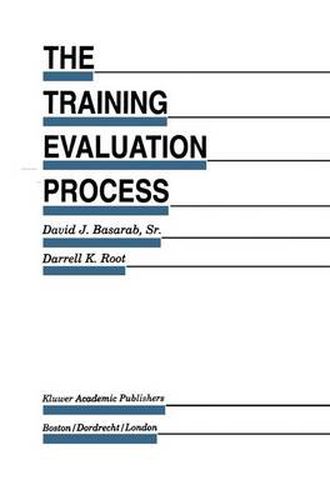Readings Newsletter
Become a Readings Member to make your shopping experience even easier.
Sign in or sign up for free!
You’re not far away from qualifying for FREE standard shipping within Australia
You’ve qualified for FREE standard shipping within Australia
The cart is loading…






This title is printed to order. This book may have been self-published. If so, we cannot guarantee the quality of the content. In the main most books will have gone through the editing process however some may not. We therefore suggest that you be aware of this before ordering this book. If in doubt check either the author or publisher’s details as we are unable to accept any returns unless they are faulty. Please contact us if you have any questions.
This book details a unique training evaluation approach developed by David J. Basarab, Sr. currently the Manager of Evaluation at Motorola University. This approach was developed in part based on information from his graduate coursework with Dr. Darrell K. Root, professor of program evaluation and educational administration at the University of Dayton. It enabled Motorola to evaluate their corporate training programs to determine whether money spent on training was an investment or an expense. This evaluation approach is also significant in determining either the effectiveness of or the opportunities to improve corporate training programs. In this text, The Training Evaluation Process, David Basarab and Darrell Root provide commercial industry training with a step-by-step approach to use when evaluating training progrruns, thus allowing training to be viewed as an investment rather than an expense. This text focuses on assessing training programs, so that they may be improved. This approach provides a successful procedure to use when evaluating training programs. Included in the text is a comprehensive explanation of the evaluation model developed by D. L. Kirkpatrick (Kirkpatrick, D. L., November 1959) in which he described four levels of evaluating training progrruns: Level 1 -Reaction: Evaluate to learn participants’ perception to the training program. Level 2 -Learning: Evaluate to determine whether participants have learned the course subject matter. Level 3 -Behavior: Evaluate participants’ use of newly acquired job skills on the job. Level 4 -Results: Evaluate the organizational impact of training on company’s workforce.
$9.00 standard shipping within Australia
FREE standard shipping within Australia for orders over $100.00
Express & International shipping calculated at checkout
This title is printed to order. This book may have been self-published. If so, we cannot guarantee the quality of the content. In the main most books will have gone through the editing process however some may not. We therefore suggest that you be aware of this before ordering this book. If in doubt check either the author or publisher’s details as we are unable to accept any returns unless they are faulty. Please contact us if you have any questions.
This book details a unique training evaluation approach developed by David J. Basarab, Sr. currently the Manager of Evaluation at Motorola University. This approach was developed in part based on information from his graduate coursework with Dr. Darrell K. Root, professor of program evaluation and educational administration at the University of Dayton. It enabled Motorola to evaluate their corporate training programs to determine whether money spent on training was an investment or an expense. This evaluation approach is also significant in determining either the effectiveness of or the opportunities to improve corporate training programs. In this text, The Training Evaluation Process, David Basarab and Darrell Root provide commercial industry training with a step-by-step approach to use when evaluating training progrruns, thus allowing training to be viewed as an investment rather than an expense. This text focuses on assessing training programs, so that they may be improved. This approach provides a successful procedure to use when evaluating training programs. Included in the text is a comprehensive explanation of the evaluation model developed by D. L. Kirkpatrick (Kirkpatrick, D. L., November 1959) in which he described four levels of evaluating training progrruns: Level 1 -Reaction: Evaluate to learn participants’ perception to the training program. Level 2 -Learning: Evaluate to determine whether participants have learned the course subject matter. Level 3 -Behavior: Evaluate participants’ use of newly acquired job skills on the job. Level 4 -Results: Evaluate the organizational impact of training on company’s workforce.